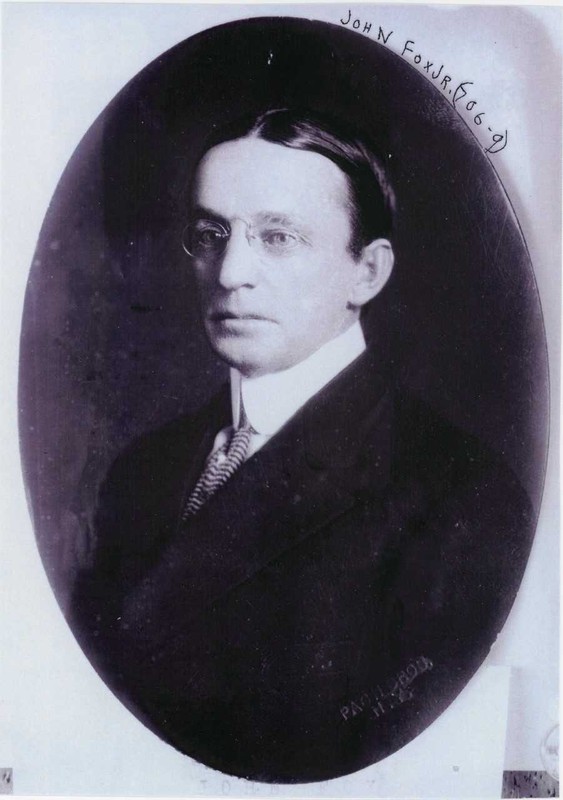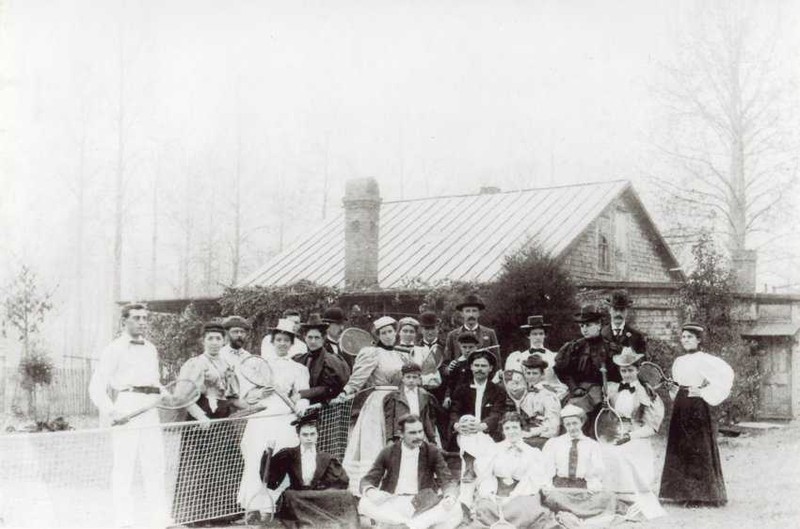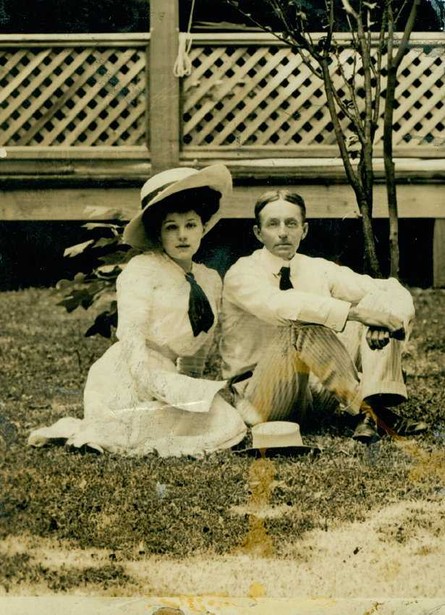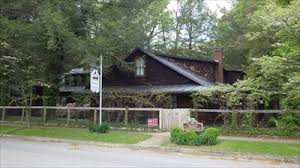The John Fox Jr. House
Introduction
Text-to-speech Audio
Images
John Fox Jr.

Tennis Party at the Fox House

Fritzi Scheff and John Fox Jr.

John Fox Jr. House

Backstory and Context
Text-to-speech Audio
In the late nineteenth century, Southwest Virginia and the areas surrounding Big Stone Gap garnered the attention of rich investors and businessmen eager to earn new wealth from the region’s rich coal deposits and timber stands. Unsatisfied with his career as a journalist in New York, John Fox Jr. joined one of his brothers who was engaged in mineral speculation near Big Stone Gap. Although the venture failed, the family relocated permanently to the town. It was there that the Harvard-educated John Fox Jr. found new inspiration for his writing. While residing in Big Stone, he completed his most successful works, The Trail of the Lonesome Pine and The Little Shepherd of Kingdom Come. Both became best sellers.
John Fox Jr.’s older brothers began construction on the cottage in 1890 while supervising their mining investments in the region. The cottage’s distinctive brown timber exterior and dark brown shingles, characteristic of the then-popular Shingle architectural style, sits upon a cut stone foundation. A wrap around shed porch provides shade for the north side and a portion of the east side of the house. A small, screened-in porch covers the west side of the house. The Fox family often utilized their large and spacious lawn for tennis matches and social gatherings. Twenty years after its construction, the Fox family expanded their home to accommodate the growing number of members living there. Upon completion, the house contained twenty rooms, a staircase to the second story, which was previously only accessible via ladder, a balcony, and two fireplaces.
One of the many interesting stories involving the house occurred in 1908. After deciding to live permanently in Big Stone Gap, Fox brought his wife, famed Austrian Opera singer Fritzi Scheff, to Southwest Virginia. Scheff worked with several acting troupes in Germany before spending three years at the Metropolitan Opera in New York City. When she came to Big Stone Gap for the first time, she arrived with eight trunks, multiple bags, jewels, her own personal car, and a maid. She could often be heard singing from the Fox house balcony, sometimes accompanied by her mother and her husband. People would often gather in their yards to hear Scheff sing German folk songs while Fox played the guitar. The marriage did not last long, however, as Fritzi missed her home in New York and her entertainment career. She and Fox divorced after only a few years. The couple had no children. Scheff continued her career in music, stage, and eventually television before her death in 1954.
Before their separation, however, John Fox Jr. and Fritzi Scheff had developed their house as the center of the arts, influence, and entertainment in Big Stone Gap. John Fox Jr. died of pneumonia in 1919 at the age of fifty-six after allegedly developing a cold on a trip to the neighboring city of Norton. He was buried in Paris, Kentucky, near his childhood home. The house remained with the Fox family until the death of John Fox Jr.’s last living sister, Elizabeth Fox, in 1977. The Lonesome Pine Arts and Crafts Association now owns the house and opens it to the public in the warmer months.
Regional scholars have since cited Fox as one of the architects of the “hillbilly” stereotype, and of the popular notion that Appalachia stands as one of the United States’ most culturally distinctive regions. Fox’s depiction of Appalachians’ cultural and racial distinctiveness reflects his generation’s erroneous understanding of mountain residents as having stemmed from a “pure” form of Anglo-Saxon ancestry. Given that his writings could alternately praise and demean certain expressions of rural mountain culture, students of his work have also considered how Fox may have contributed to the solidification of more rigid class and racial boundaries in the Appalachian Region. Still, his novels remain popular to this day. The continued success of the seasonal outdoor drama, Trail of the Lonesome Pine, serves as a testament to his ability to create enduring characters and stories that resonate across generations.
Sources
Addington, Luther F., and Wise County Bicentennial Committee. History of Wise County, Virginia. Wise, VA: Bicentennial Committee of Wise County, Virginia, 1976.
Documents concerning John Fox Jr. and his residence, Southwest Virginia Museum Historical State Park, Big Stone Gap, VA.
“John Fox Jr. House.” Virginia Department of Historic Resources. https://www.dhr.virginia.gov/historic-registers/101-0001/ (accessed March 24, 2020).
Fox, John Jr. “Autobiography.” Southwest Virginia Museum Historical State Park, Big Stone Gap, VA.
Harkins, Anthony. Hillbilly: A Cultural History of an American Icon. New York, Oxford University Press, 2004.
Lee, Ann Carter. Buildings of Virginia: Valley, Piedmont, Southside and Southwest. Charlottesville: University of Virginia Press, 2015.
McLain, Raymond. “Introduction to Speaker.” Speech, Transylvania College, Lexington, KY.
Moore, William Cabell. “John Fox Jr. Biography.” Southwest Virginia Museum Historical State Park, Big Stone Gap, VA.
Photographs featuring John Fox Jr. and his residence, Southwest Virginia Museum Historical State Park, Big Stone Gap, VA.
Unknown. Fox Biography. Southwest Virginia Museum Historical State Park, Big Stone Gap, VA.
Wilson, Darlene. "The Felicitous Convergence of Mythmaking and Capital Accumulation: John Fox Jr. and the Formation of An(Other) Almost-White American Underclass." Journal of Appalachian Studies 1, no. 1 (1995): 5-44. Accessed April 30, 2020. www.jstor.org/stable/41446303
Southwest Virginia Museum Historical State Park
Southwest Virginia Museum Historical State Park
Southwest Virginia Museum Historical State Park
Southwest Virginia Museum Historical State Park
